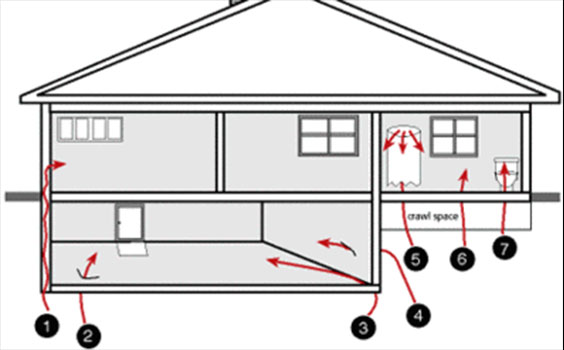RADON HOME INSPECTION
Radon in your home has a direct influence on your health!
How Does Radon Enter the Home?
Typically, the air pressure inside your home is lower than the pressure in the soil around your home's foundation. Due to this difference, your house acts like a vacuum, drawing radon gas in through foundation cracks and other openings of your home.
Radon may also be present in well water and can be released into the air in your home when water is used for showering and another household uses.


